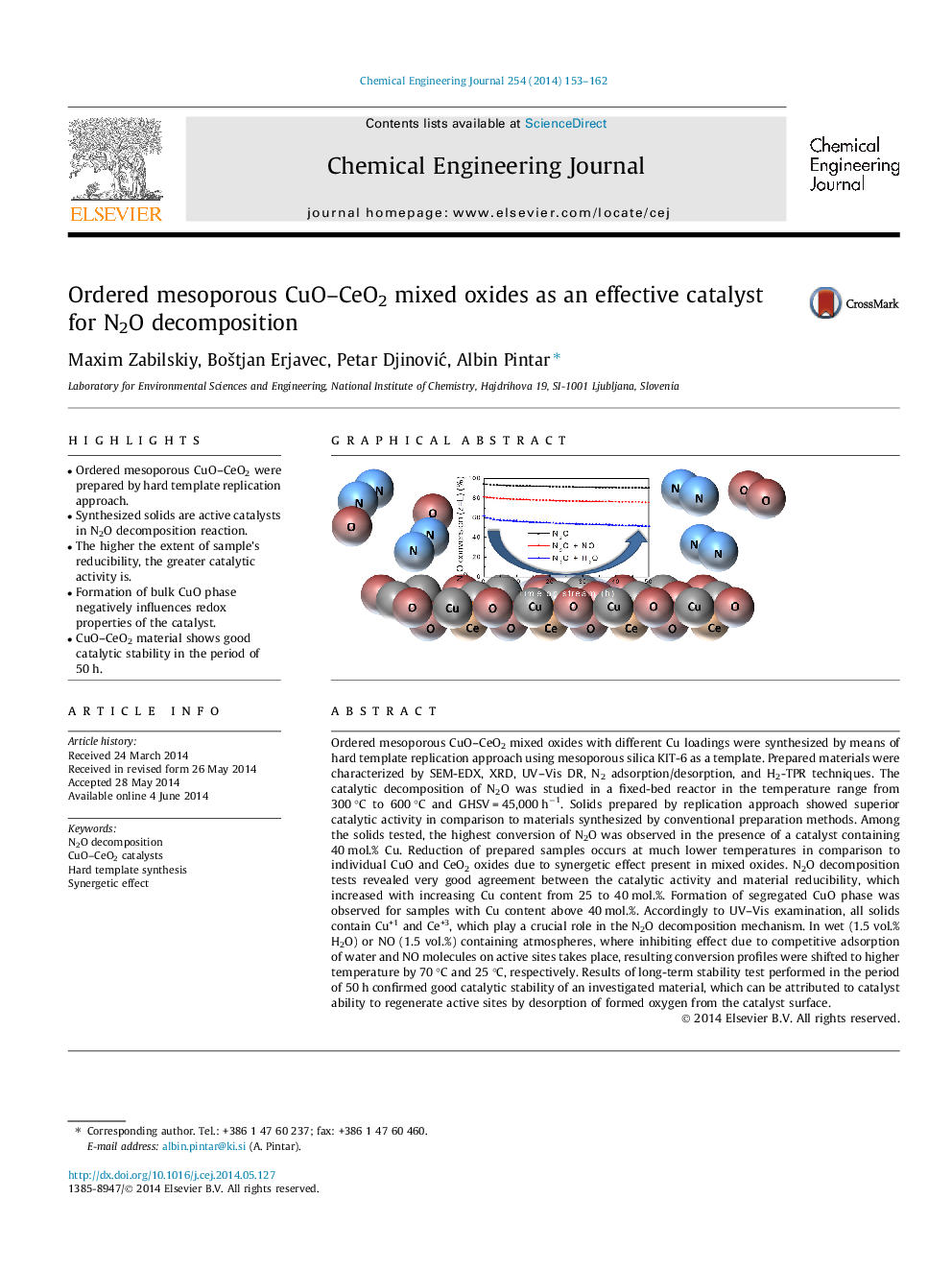| کد مقاله | کد نشریه | سال انتشار | مقاله انگلیسی | نسخه تمام متن |
|---|---|---|---|---|
| 147292 | 456388 | 2014 | 10 صفحه PDF | دانلود رایگان |

• Ordered mesoporous CuO–CeO2 were prepared by hard template replication approach.
• Synthesized solids are active catalysts in N2O decomposition reaction.
• The higher the extent of sample’s reducibility, the greater catalytic activity is.
• Formation of bulk CuO phase negatively influences redox properties of the catalyst.
• CuO–CeO2 material shows good catalytic stability in the period of 50 h.
Ordered mesoporous CuO–CeO2 mixed oxides with different Cu loadings were synthesized by means of hard template replication approach using mesoporous silica KIT-6 as a template. Prepared materials were characterized by SEM-EDX, XRD, UV–Vis DR, N2 adsorption/desorption, and H2-TPR techniques. The catalytic decomposition of N2O was studied in a fixed-bed reactor in the temperature range from 300 °C to 600 °C and GHSV = 45,000 h−1. Solids prepared by replication approach showed superior catalytic activity in comparison to materials synthesized by conventional preparation methods. Among the solids tested, the highest conversion of N2O was observed in the presence of a catalyst containing 40 mol.% Cu. Reduction of prepared samples occurs at much lower temperatures in comparison to individual CuO and CeO2 oxides due to synergetic effect present in mixed oxides. N2O decomposition tests revealed very good agreement between the catalytic activity and material reducibility, which increased with increasing Cu content from 25 to 40 mol.%. Formation of segregated CuO phase was observed for samples with Cu content above 40 mol.%. Accordingly to UV–Vis examination, all solids contain Cu+1 and Ce+3, which play a crucial role in the N2O decomposition mechanism. In wet (1.5 vol.% H2O) or NO (1.5 vol.%) containing atmospheres, where inhibiting effect due to competitive adsorption of water and NO molecules on active sites takes place, resulting conversion profiles were shifted to higher temperature by 70 °C and 25 °C, respectively. Results of long-term stability test performed in the period of 50 h confirmed good catalytic stability of an investigated material, which can be attributed to catalyst ability to regenerate active sites by desorption of formed oxygen from the catalyst surface.
Figure optionsDownload as PowerPoint slide
Journal: Chemical Engineering Journal - Volume 254, 15 October 2014, Pages 153–162